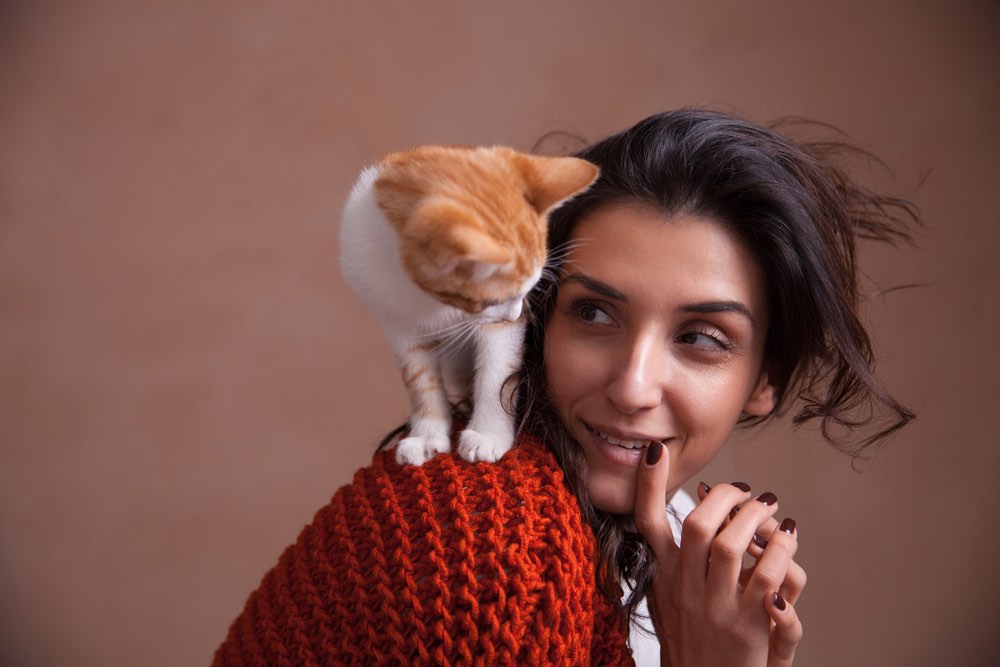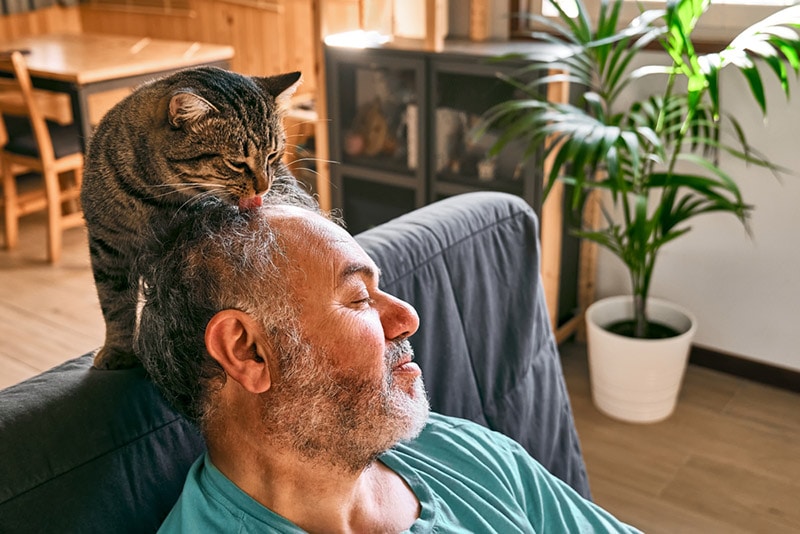Cats are fascinating creatures with unique behaviors that may seem puzzling to us humans. One such behavior is cat bunting. In simple terms, cat bunting is when a cat rubs its head against a human, object, or another animal, often followed by rubbing the forehead and cheeks on the subject. But what exactly is cat bunting, and why do cats engage in this behavior? Let’s delve into the intriguing world of cat behavior and find out!

What Exactly Is Cat Bunting?
Cat bunting is a common behavior among all cat breeds. You can identify cat bunting when your cat presses its forehead against your body (typically your head) and then rubs its forehead and cheeks against you. Cats also bunt other cats, dogs, furniture, and even walls. Now, let’s explore the reasons behind this behavior and how it is connected to a cat’s nature and instincts.
Cats have scent glands on various parts of their bodies, including the top of their head, cheeks, lips, and tail. These glands release pheromones, which are natural messengers to other cats and animals. Pheromones can convey a calming sensation, convey identification information, and establish territory or ownership. These scent glands play a crucial role in cat bunting.

Reasons Why Cats Practice Head Bunting
Cats engage in head bunting for several reasons, none of which are harmful or aggressive. Let’s explore these reasons, which are both interesting and endearing.
1. Bonding
Cats use head bunting as a way to bond with their companions. When a cat bunts you, it means they have accepted you as part of their group or “feline family.” It goes beyond bonding; your cat believes you have a responsibility to participate in the natural behaviors of the feline kingdom. So, embrace the bunting as a sign of love and acceptance!

2. Social Ranking
Cats bunt other cats in their group to establish a social hierarchy. The dominant cat of the group will bunt the others to spread their pheromones and create a group scent. This scent signals that all the cats in the group belong, work, and protect each other. Bunting also helps establish a functional social ranking within the group, promoting harmony and preventing serious conflicts.
3. Marking Behavior
Cat bunting is also a way for cats to mark their territory. They may bunt objects like furniture and clothing to leave their scent, signaling to other animals that they have been there. It’s not about territorial marking, but rather leaving a “news” trail to let others know of their presence. By spreading their pheromones, cats ensure that their scent is recognized by other beings in the vicinity.

4. Scent Sharing
Cats bunt their human and animal companions to share their scent. By doing so, they create a sense of community and balance within the group. Scent sharing is particularly common in households with multiple cats or in communal places like boarding centers and humane societies. It helps cats bond and maintain a harmonious environment.
How Should You Respond to Your Cat’s Head Bunting?
When your cat bunts you, it’s essential to respond positively. You can “bunt” your cat back gently, give them a few pets, pick them up for a cuddle session, or engage in playtime with them. Observe how your cat reacts to different responses and learn what they enjoy the most. Tailor your response to match their preferences. However, pay attention to how other animals, especially dogs, react to a cat’s bunting behavior. If aggression arises, it’s crucial to provide proper training and supervision to ensure a peaceful coexistence.

Conclusion
Cat bunting is a natural behavior that cats use to communicate and establish connections. It’s usually a sign of acceptance and love. So, next time your cat engages in head bunting, embrace it as a special moment of bonding. Remember, understanding your cat’s behavior helps strengthen the unique bond between you and your feline friend.